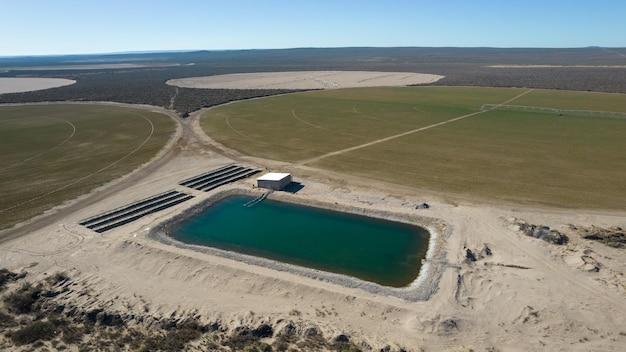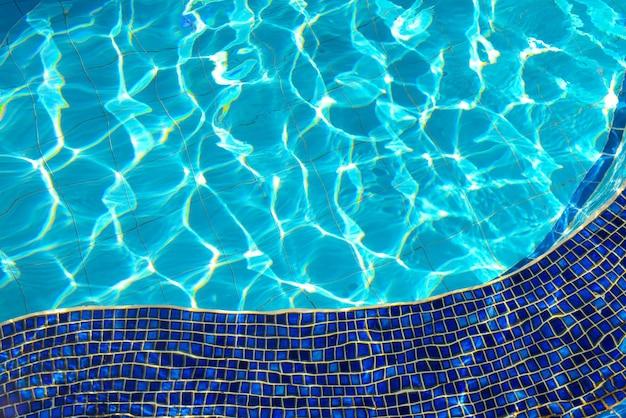Do you have a swimming pool that’s seen better days? Have you noticed cracks, rough patches, or stains? If so, it might be time to consider resurfacing your pool. But what does that mean? And how much will it cost? In this blog post, we’ll cover everything you need to know about pool resurfacing, including the difference between resurfacing and replastering, how to know if your pool needs resurfacing, and even a pool resurfacing cost calculator. Get ready to dive in!
The Basics of Pool Resurfacing: What You Need to Know
If you’re a pool owner, you know the joys of having your own aquatic escape in your backyard. But just like anything else, your pool will eventually start to show signs of wear and tear. Especially if you swim in it all the time, or have a family of rowdy kids who love to play “Marco Polo” on weekends. Over time, the pool’s surface can become chipped, cracked, stained, or faded, making it less attractive and less safe to use. That’s where pool resurfacing comes in – it’s the process of rejuvenating the surface of your pool so that it looks and feels like new again.
What is Pool Resurfacing, Exactly
Pool resurfacing is a type of pool renovation that involves removing the current surface of your pool and replacing it with a new one. This can be done with a variety of materials, including plaster, pebble, tile, or fiberglass. Each material has its own unique set of benefits and drawbacks, so it’s important to choose one that best suits your needs and budget.
Why Do I Need to Resurface My Pool
There are several reasons why you may need to resurface your pool. One common reason is simply the passage of time – as your pool ages, the surface can start to deteriorate, leading to cracks, chips, and discoloration. Another reason may be damage caused by harsh pool chemicals or natural wear and tear. Resurfacing your pool can also be a way to update the look of your backyard and add value to your home.
When Should I Resurface My Pool
The best time to resurface your pool is before it gets too damaged – that way, you can avoid costly repairs or even having to completely replace your pool. If you start to notice small cracks or chips in the surface of your pool, or if it’s looking dull or stained, it’s probably time to start thinking about resurfacing. However, be sure to consult with a professional pool contractor to get a more accurate assessment of your pool’s condition and when it might be time for resurfacing.
How Long Does Pool Resurfacing Take
The duration of pool resurfacing can vary depending on the size of your pool, the type of surface you choose, and the condition of your current pool. On average, pool resurfacing can take anywhere from a few days to a few weeks, so it’s important to plan ahead and be patient. Keep in mind that during the resurfacing process, your pool will be temporarily out of commission, so you’ll need to make other arrangements for swimming until it’s finished.
Pool resurfacing is a great option for any pool owner looking to restore or update their pool’s surface. By choosing the right materials and hiring a professional pool contractor, you can have a pool that looks and feels like new again. Whether you’re just starting to notice signs of wear and tear or you’re ready to give your backyard a fresh new look, consider pool resurfacing as a smart and cost-effective solution.
Pool Resurfacing Cost Calculator
As much as you may love your pool, there comes a time when you need to give it a facelift. That’s where pool resurfacing comes in. Resurfacing your pool can give it a new lease on life, but as expected, it also comes at a cost. Determining the cost of resurfacing your pool requires taking a few factors into consideration.
Factors affecting pool resurfacing cost
The primary factors that come into play when calculating pool resurfacing costs include the type of finish, the size of the pool, and the pool’s condition. The type of finish you choose will affect the cost, with higher-end finishes like tiles costing more. Additionally, larger pools will require more materials and labor, further driving up the cost. Finally, a pool’s condition can impact the cost, with pools that require extensive repair work costing more to resurface.
Estimating pool resurfacing costs
Now, onto the question on everyone’s minds: how do you estimate the cost of resurfacing your pool? Well, fear not, dear reader, as there are several online tools to help you calculate the cost. You can use a pool resurfacing cost calculator to get a rough estimate of what you can expect to pay based on the pool’s dimensions. These calculators can factor in the type of finish, pool size, and other variables to give you a more accurate estimate.
Do-it-yourself (DIY) vs. Hiring a professional
Before you start resurfacing your pool, you may be wondering if it’s something you can do yourself. While some homeowners may opt for a DIY approach to save on labor costs, it’s not recommended. Resurfacing a pool requires a lot of work and technical expertise, not to mention the need for expensive tools and equipment. In the end, it may end up costing you more in time and money than if you had hired a professional.
In conclusion, pool resurfacing is an investment that can transform your pool from unsightly to stunning. Remember to take into account factors such as pool size, condition, and type of finish when estimating costs. Additionally, using a pool resurfacing cost calculator can help you get an accurate estimate. And if you’re not confident in your DIY skills, be sure to hire a professional to ensure the job is done right.
What Does it Mean to Resurface a Pool
If your pool has seen better days, it might be time to resurface it. But what exactly does “resurface” mean? Don’t worry, we’re here to explain it to you in a way that won’t make your eyes glaze over.
The Short Answer
Resurfacing a pool means replacing or repairing the surface layer of your pool. This layer is typically made of plaster, pebble, or tile and is responsible for keeping your pool water tight.
The Long Answer
Over time, the surface layer of your pool can become cracked, stained, or otherwise damaged. When this happens, it’s time to resurface. Resurfacing can involve stripping the old surface layer and replacing it with new plaster, pebble, or tile. Alternatively, some pool owners choose to repair small cracks or stains by applying a new layer of plaster on top of the old one.
Although resurfacing can be an expensive process, it’s important to keep your pool in good condition to extend its lifespan. Plus, a freshly resurfaced pool looks amazing and can increase your property value!
Signs You Need to Resurface Your Pool
So, how do you know when it’s time to resurface your pool? Here are a few signs to look out for:
- Cracks in the surface layer
- Stains that won’t come out
- Rough or sharp spots
- Tiles that are falling off
- Water that won’t hold or is constantly leaking
If you notice any of these issues, it’s time to call in a professional and start the resurfacing process.
Resurfacing a pool isn’t as complicated as it sounds. It’s simply the process of repairing or replacing the surface layer of your pool to keep it looking and functioning its best. If you’re experiencing any issues with your pool’s surface layer, it’s time to give it the TLC it deserves with a professional resurfacing job.
How to Tell if Your Pool Needs Resurfacing
Ah, the luxuries of owning a pool. Lazy afternoons, endless summer fun, and the serene sound of water cascading over the edge. But how do we know when it’s time to resurface our beloved oasis? Here are some surefire signs:
Uneven Surface
Have you ever stepped into your pool and felt as if you are walking on an ocean floor? If so, it could be a sign that your pool needs resurfacing. Concrete or plaster surfaces can wear over time, creating uneven wear patterns that can be felt on the bottom of your feet.
Stains
Stains are another telltale sign that your pool needs resurfacing. Water chemistry, minerals, and chemicals can all play a role in creating unsightly stains on your pool’s surface. As these stains become more pronounced, it may be time to resurface your pool.
Cracks
Nobody likes cracks. They’re unsightly, and they can be dangerous. Cracks are an indicator that your pool’s surface has become compromised and may require resurfacing. Any visible structural damage warrants attention to the situation.
Rough Surface
If your pool surface feels rough and abrasive to the touch, this could be another sign that it’s time for a resurfacing. This rough texture comes from the worn-out surface and can tear skin and clothing alike, leaving your swimming experience less than desirable.
Fading Color
The appearance of your pool is just as important as its function. Over time, your pool’s color may start to fade or appear discolored, indicating the need for a fresh resurfacing. Faded or discolored pools lose their shine and luster, which may impact your pool’s appeal.
So there you have it, the signs that your pool needs resurfacing. Remember, by staying on top of pool maintenance, you’re not only extending the life of your pool, but you’re also ensuring that you and your guests can enjoy the luxury of your pool for years to come.
What is the difference between Replastering and Resurfacing a Pool
So, you’ve got an old, worn-down pool that’s seen better days. It’s time to give your backyard oasis a facelift, but you’re not quite sure where to start. Do you need to replaster the pool, or is resurfacing the way to go? Fear not, my friend, as I am here to help you understand the difference between the two.
Replastering: The Old-School Method
Replastering is the traditional way of giving a pool a fresh coat of paint, so to speak. It involves chipping away the old plaster from the pool’s surface and applying a new layer of plaster on top. This process requires a skilled pool technician and can take several weeks to complete.
The downside to replastering is that it’s a temporary fix. Over time, the new plaster will begin to chip and crack, leaving you right back where you started. If you’re looking for a longer-lasting solution, resurfacing may be the way to go.
Resurfacing: The New Kid on the Block
Resurfacing is a newer method of pool renovation that involves applying a new layer of material, such as pebble or quartz, on top of the pool’s existing surface. This process is faster and more cost-effective than replastering and can be completed in just a few days.
The biggest advantage of resurfacing is its durability. The materials used in resurfacing are designed to last for decades, so you won’t have to worry about chipping or cracking anytime soon. Plus, resurfacing can give your pool a unique look and feel that replastering can’t match.
Which One is Right for You
Ultimately, the decision to replaster or resurface your pool depends on your individual needs. If you’re looking for a quick fix and don’t mind redoing the job every few years, replastering may be the way to go. But if you want a long-lasting solution that will save you time and money in the long run, resurfacing is the clear winner.
In conclusion, whether you choose to replaster or resurface your pool, there’s no denying that a freshly renovated pool can transform your backyard into a paradise. So go ahead and make the investment, and get ready to enjoy a summer full of swimming, sun, and fun!



